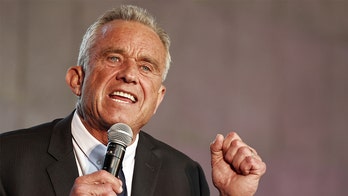Two NASA astronauts are facing an extended stay on the International Space Station due to ongoing technical issues with Boeing's Starliner spacecraft. Test pilots Butch Wilmore and Suni Williams were scheduled to return to Earth in mid-June, but thruster failures and helium leaks on the spacecraft have indefinitely delayed their departure.
NASA astronauts Butch Wilmore and Suni Williams remain stranded on the International Space Station (ISS) due to unresolved issues with Boeing's Starliner spacecraft. The duo was initially scheduled to return to Earth in mid-June after a week-long mission aboard the Starliner, but persistent technical problems have forced NASA and Boeing to extend their stay indefinitely.
The spacecraft, which is designed to transport astronauts to and from the ISS, has experienced multiple thruster failures and helium leaks, prompting mission managers to ground the vehicle until the issues can be resolved. Engineers have been working diligently to understand the causes of the failures, but a return date has yet to be announced.

NASA Astronauts Stuck on ISS Due to Boeing Starliner Issues
NASA's commercial crew program manager, Steve Stich, acknowledged that backup options are being considered, including SpaceX's Dragon capsule. However, the goal remains to bring Wilmore and Williams back aboard the Starliner.
"We'll come home when we're ready," Stich said.

NASA Astronauts Stuck on ISS Due to Boeing Starliner Issues
The extended stay on the ISS has raised concerns about the astronauts' well-being and the potential impact on future missions. NASA has assured the public that the astronauts are in good health and spirits, and that the delay will not affect the overall timeline of the commercial crew program.
Engineers have completed testing on a spare thruster in the New Mexico desert and are currently examining it to identify the cause of the failure. Five thrusters failed during the Starliner's approach to the ISS on June 6, a day after liftoff. Four have since been reactivated, but the remaining one remains inoperable.
It appears that degraded seals are responsible for both the helium leaks and thruster problems, but further analysis is needed. Engineers plan to test-fire the capsule's thrusters this weekend while docked to the ISS to gather more data.
The Starliner spacecraft is facing scrutiny as NASA investigates the technical issues that have plagued the vehicle. Boeing, the company responsible for developing the spacecraft, has been awarded billions of dollars in contracts by NASA to build and operate the Starliner.
This was Boeing's first test flight with a crew aboard the Starliner. The initial demonstration flight in 2019, which flew empty, never made it to the space station due to software problems. Boeing repeated the test in 2022, but additional issues surfaced during that mission.
In contrast, SpaceX has been successfully ferrying astronauts to and from the ISS since 2020. SpaceX's Falcon 9 rockets have recently been grounded due to an upper-stage failure on a satellite-delivery mission, but the company is expected to resume crew flights soon.
The extended stay of the NASA astronauts on the ISS highlights the challenges of developing and operating complex spacecraft systems. NASA and Boeing are working closely to resolve the issues with the Starliner and ensure the safe return of the astronauts.










